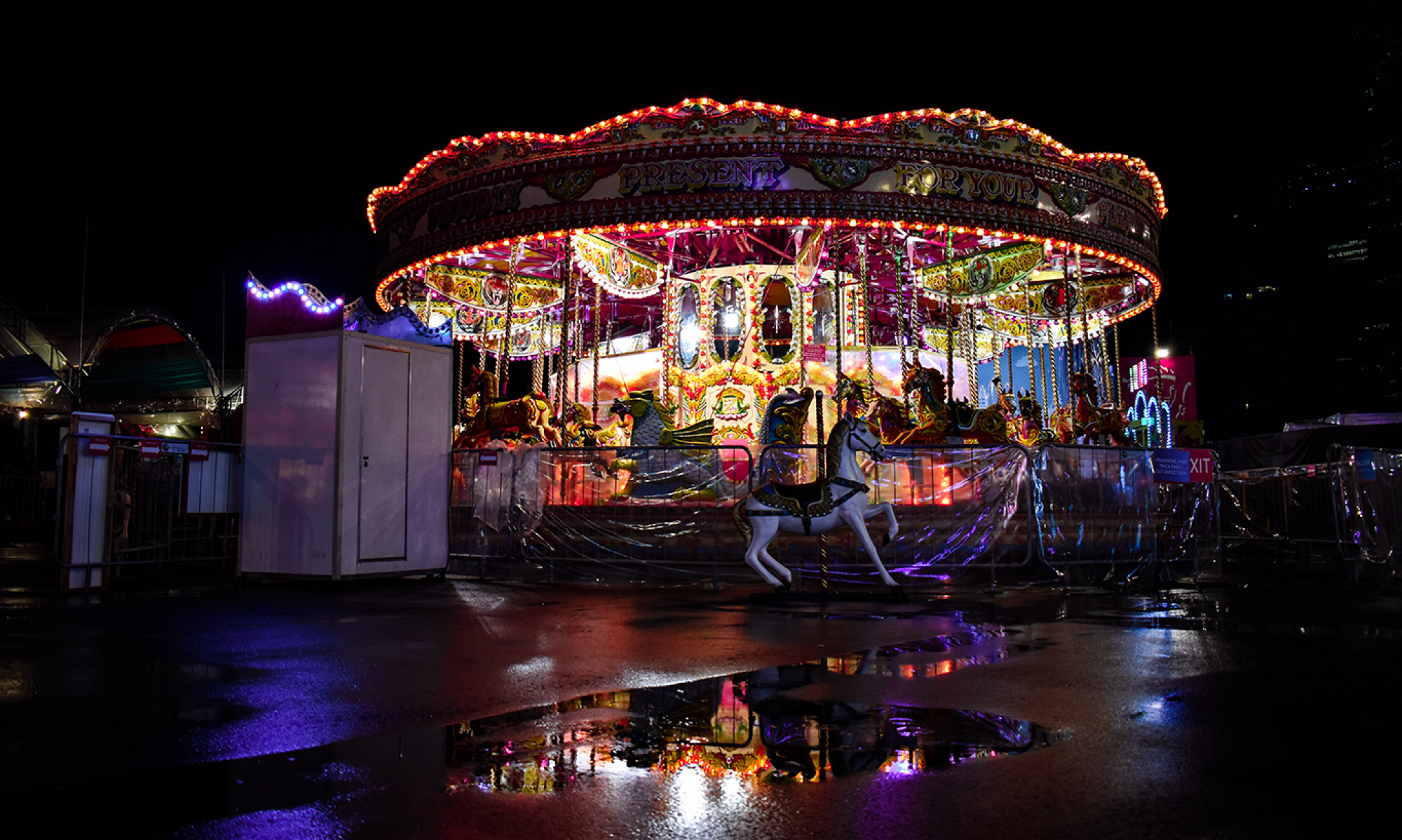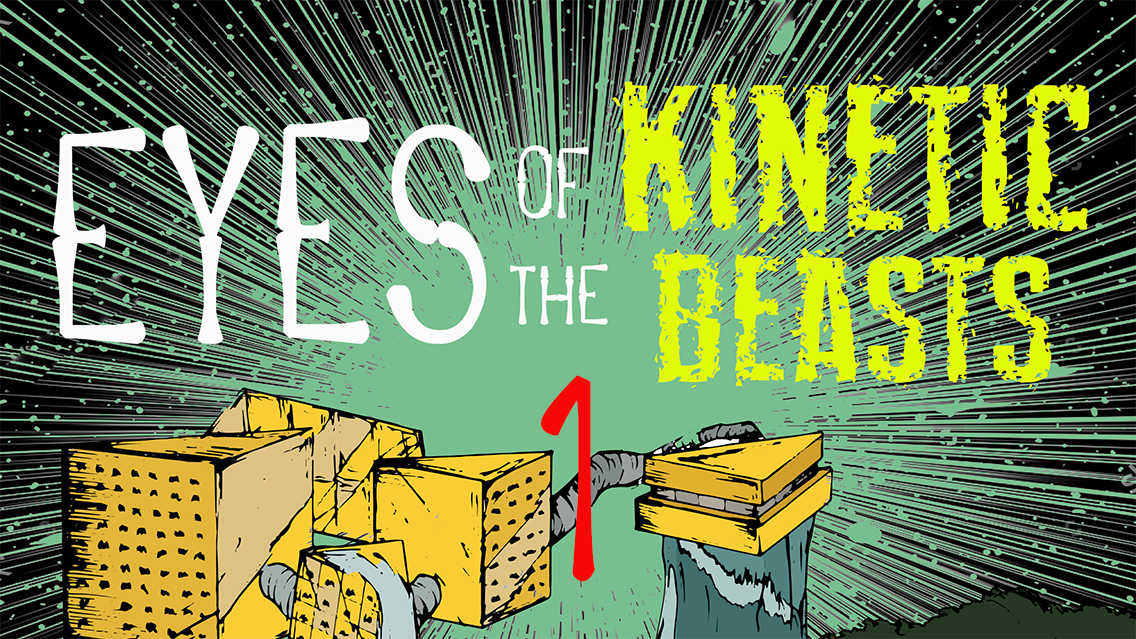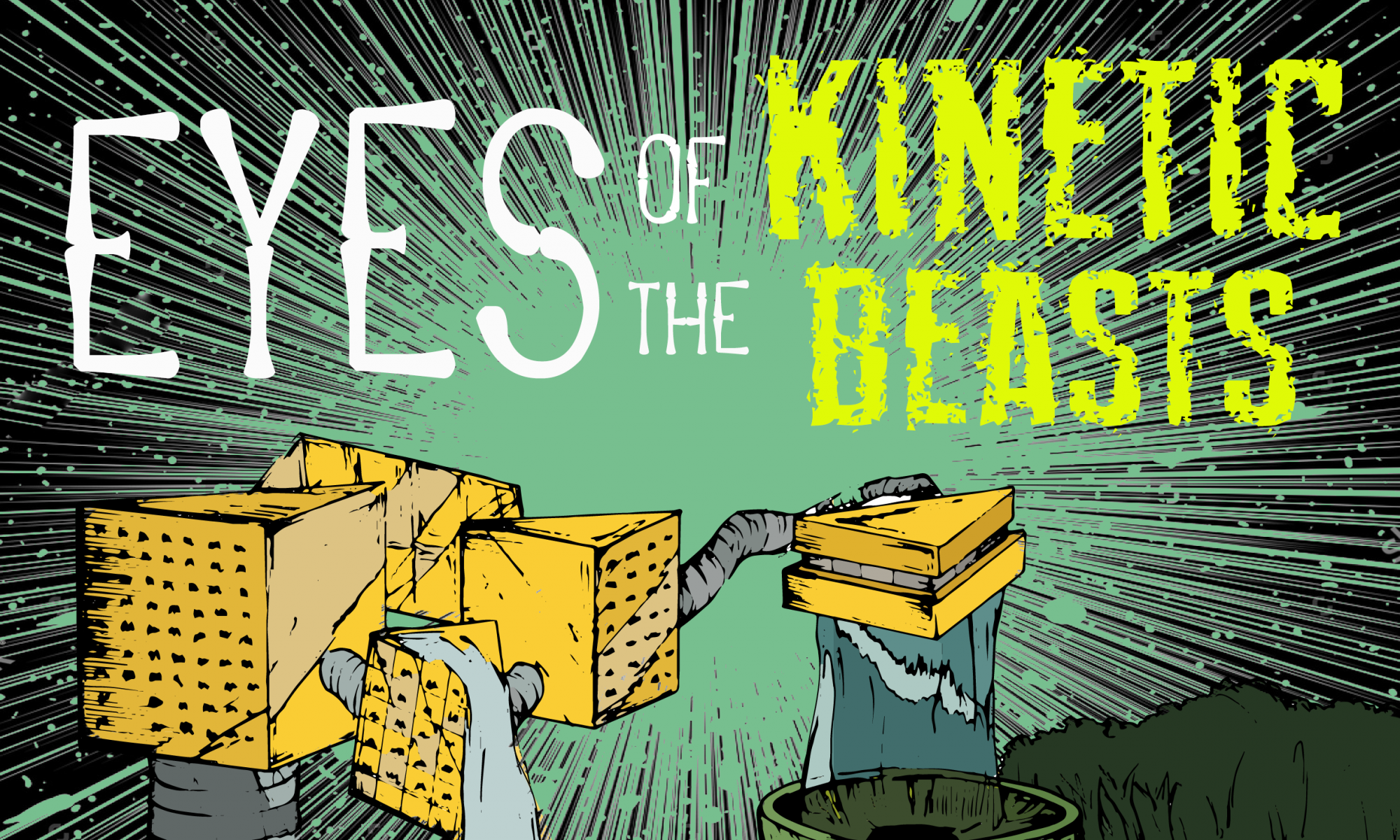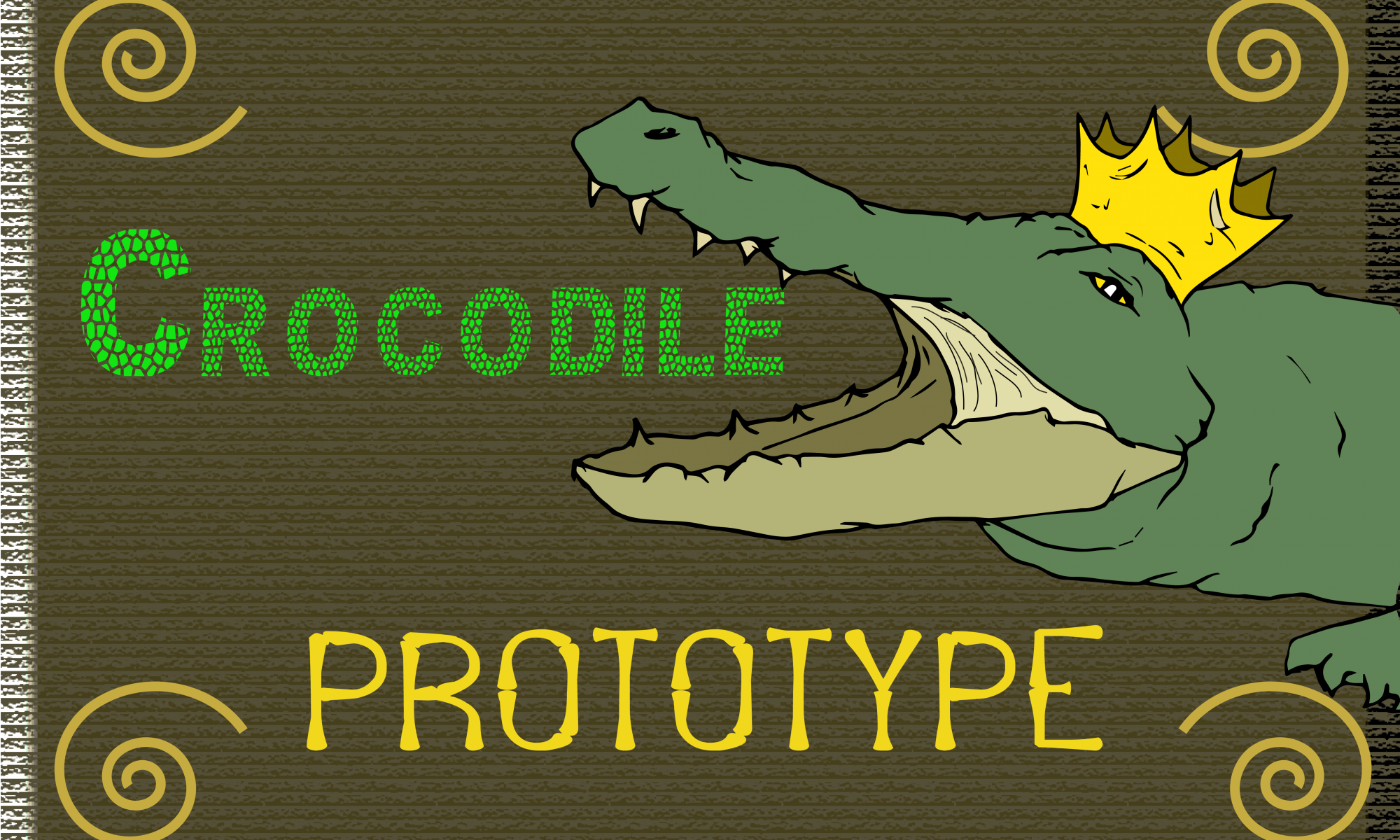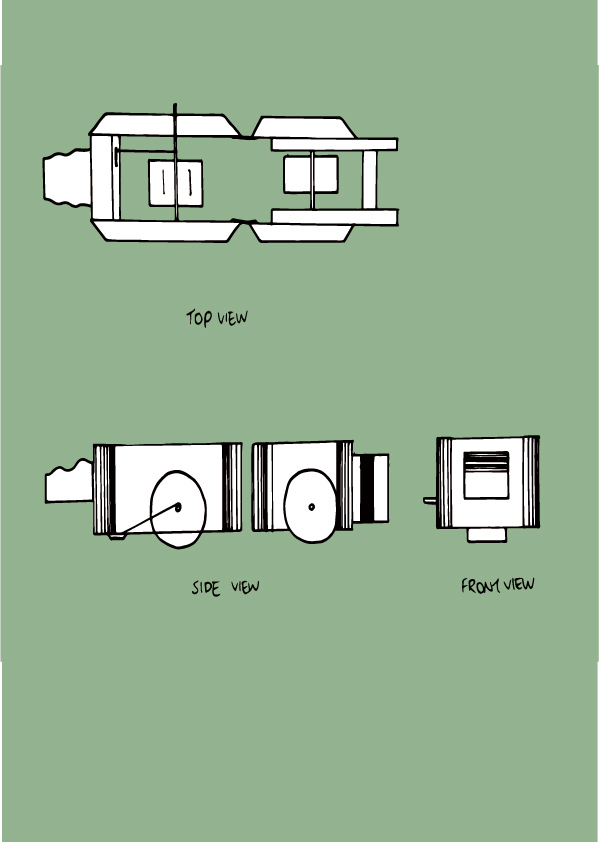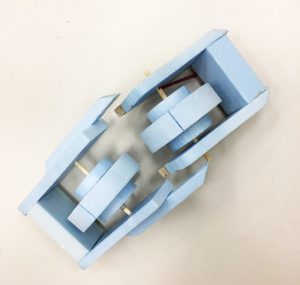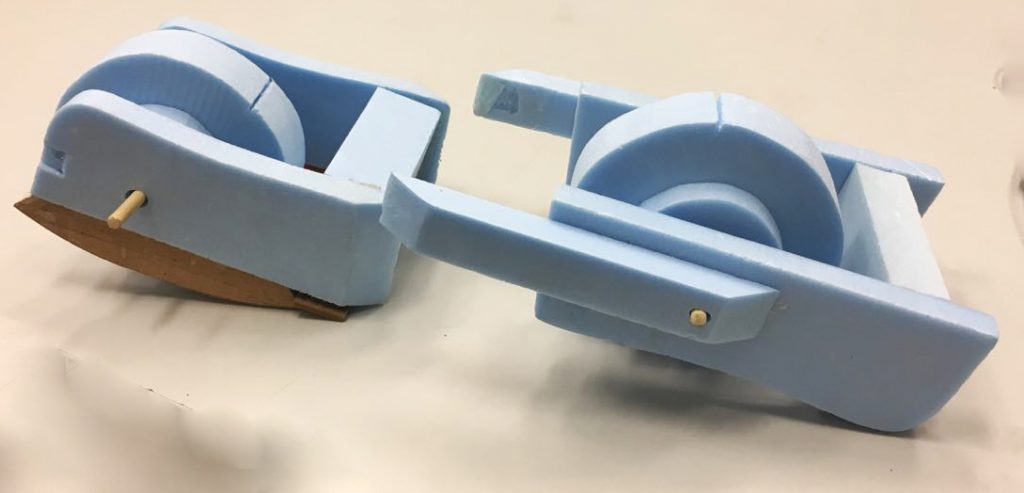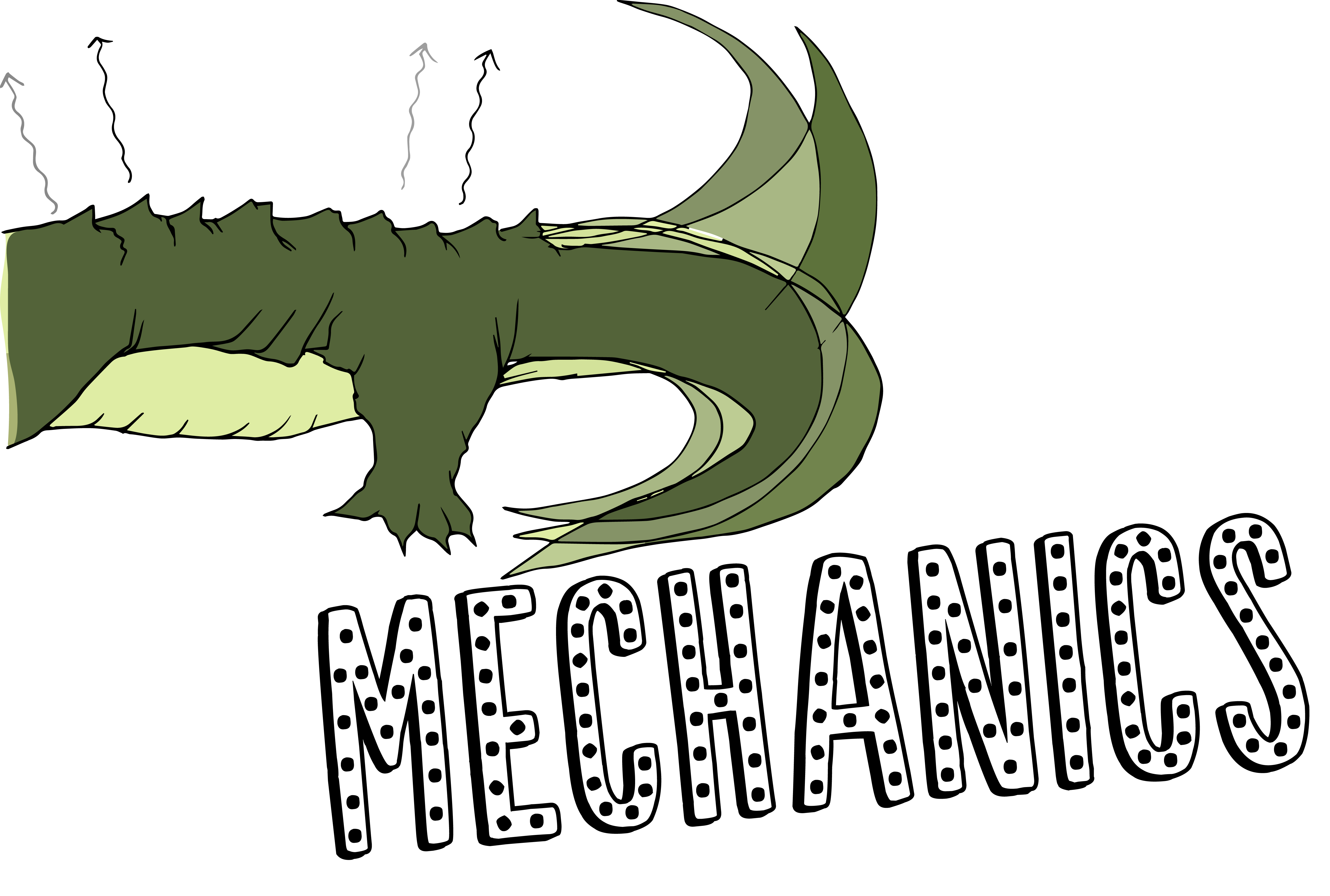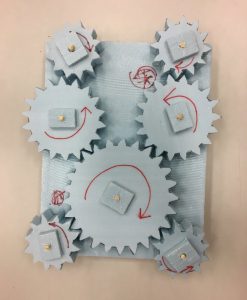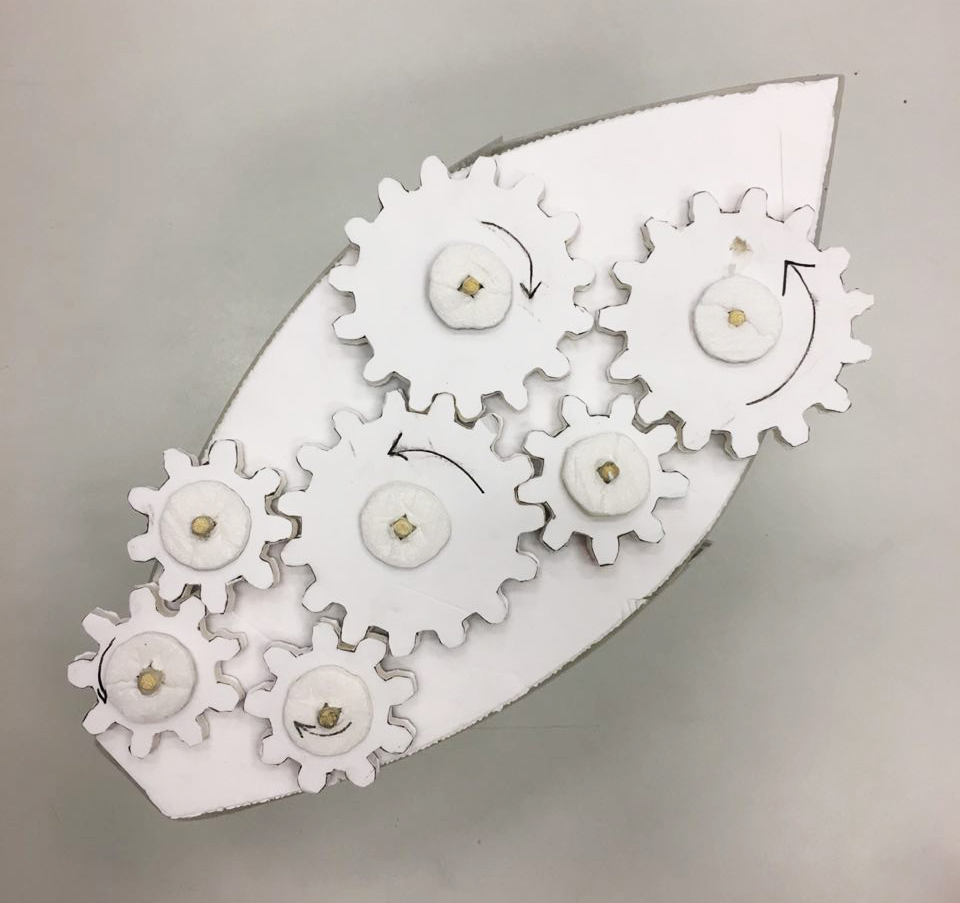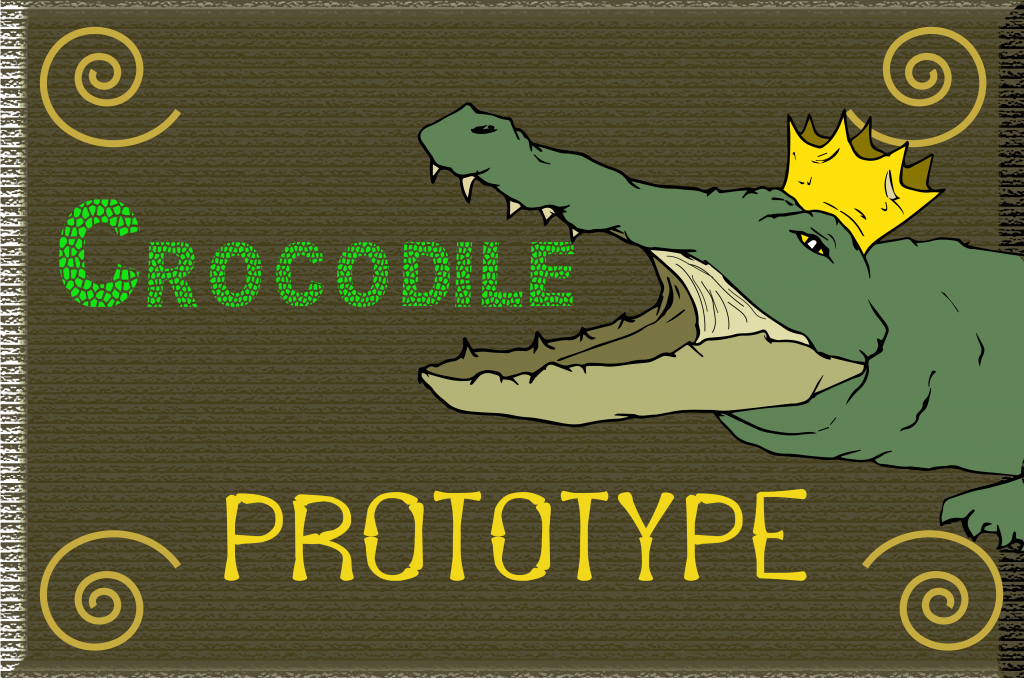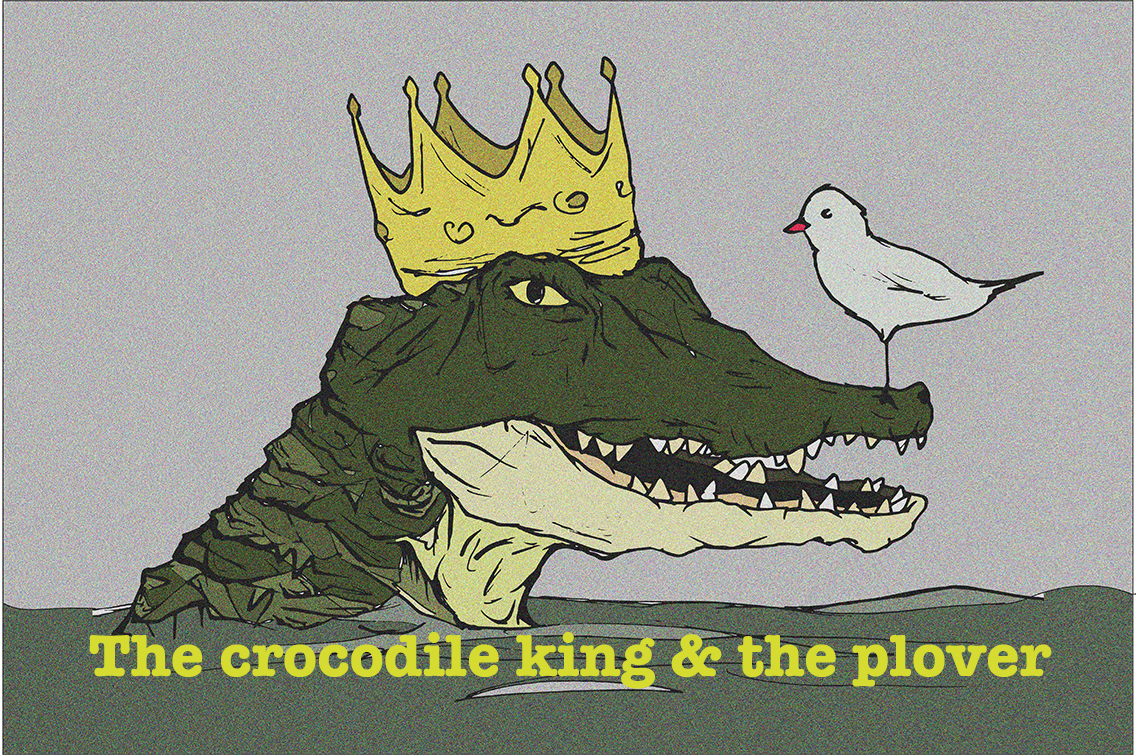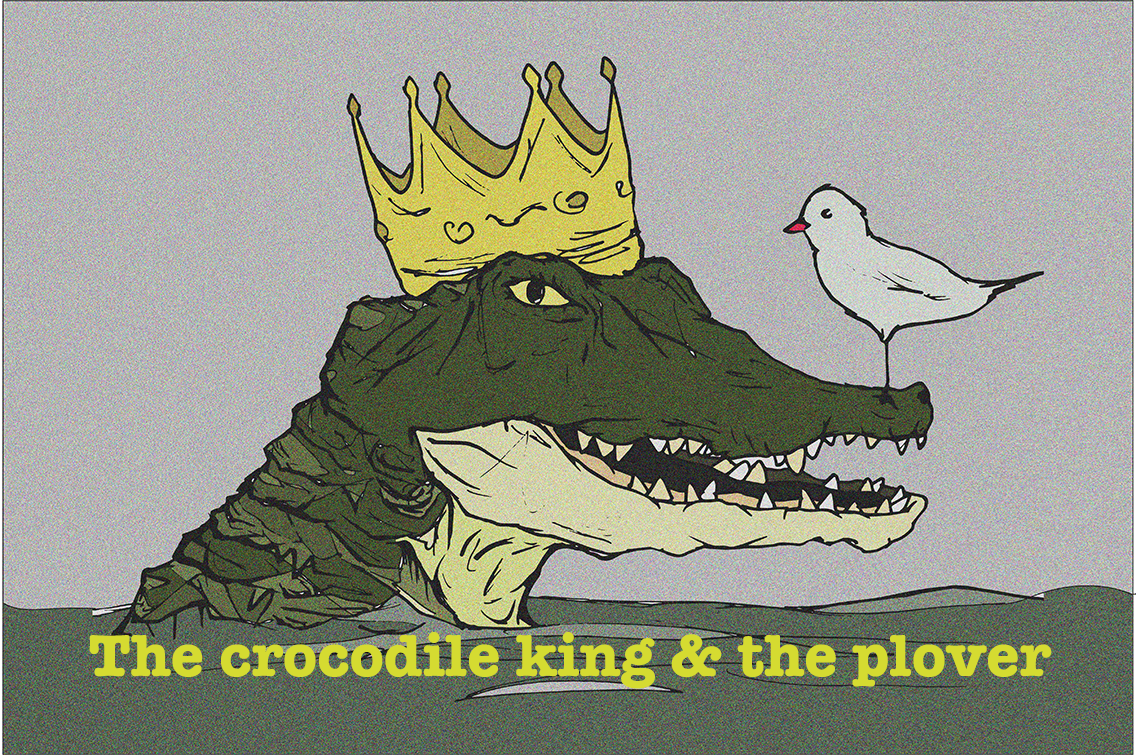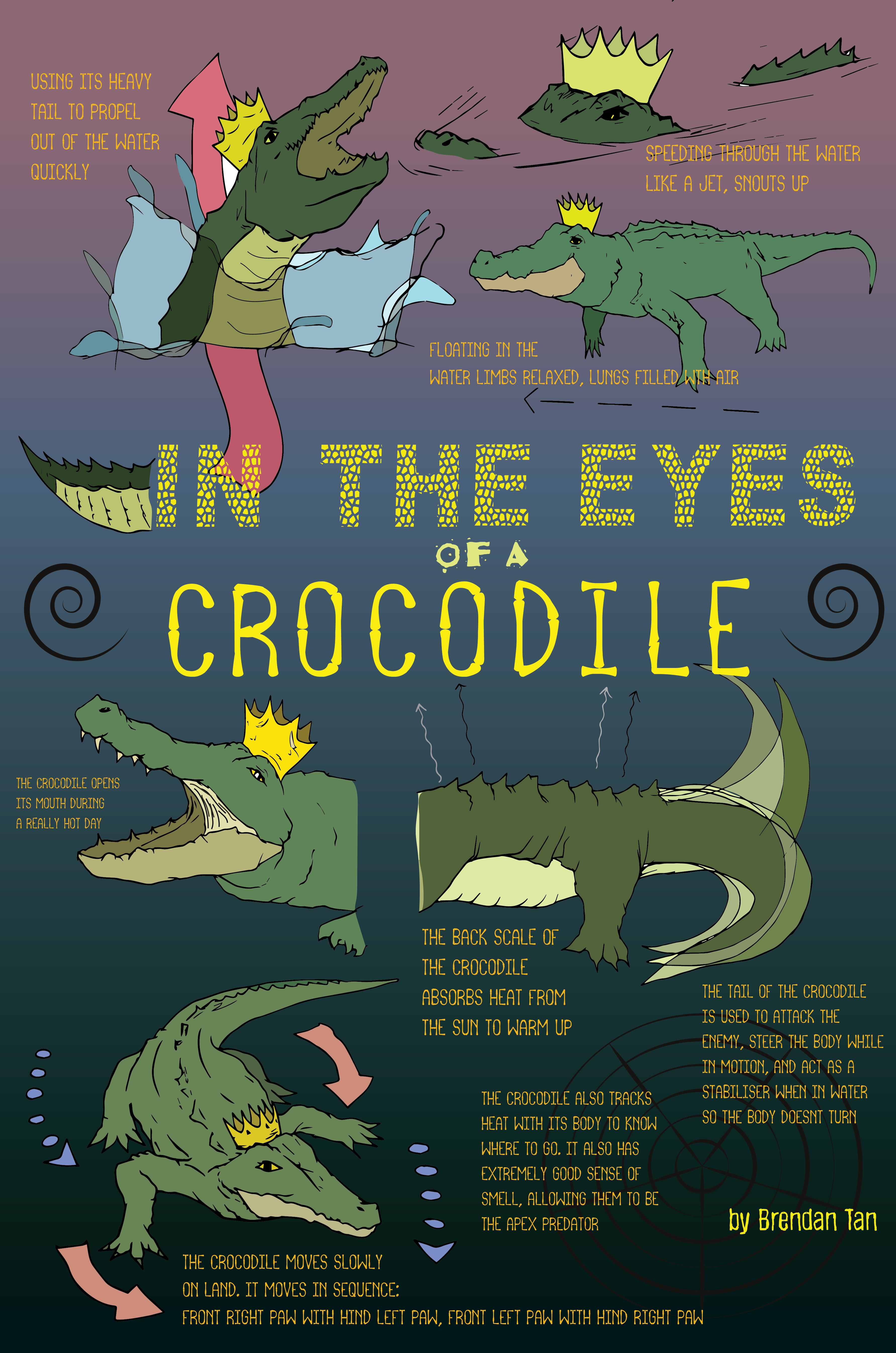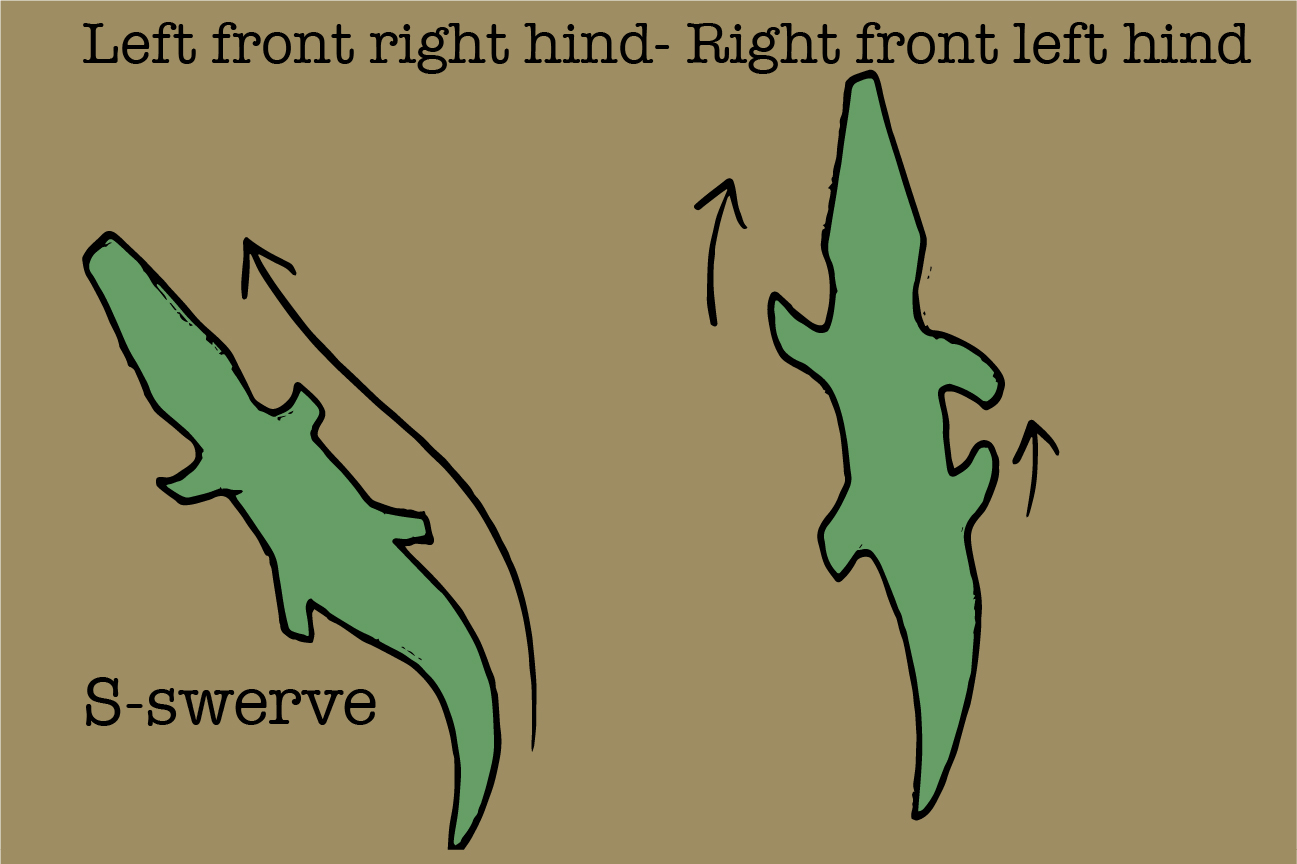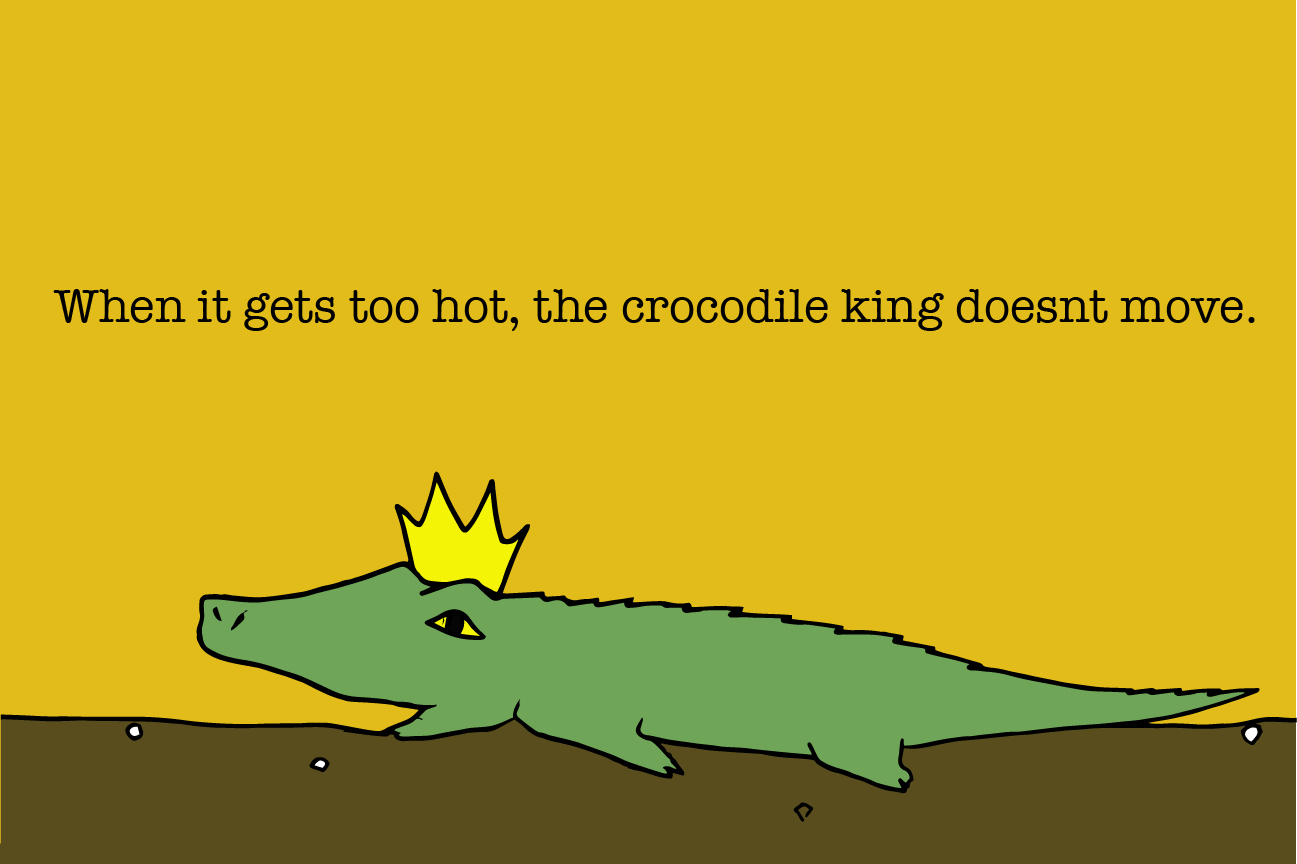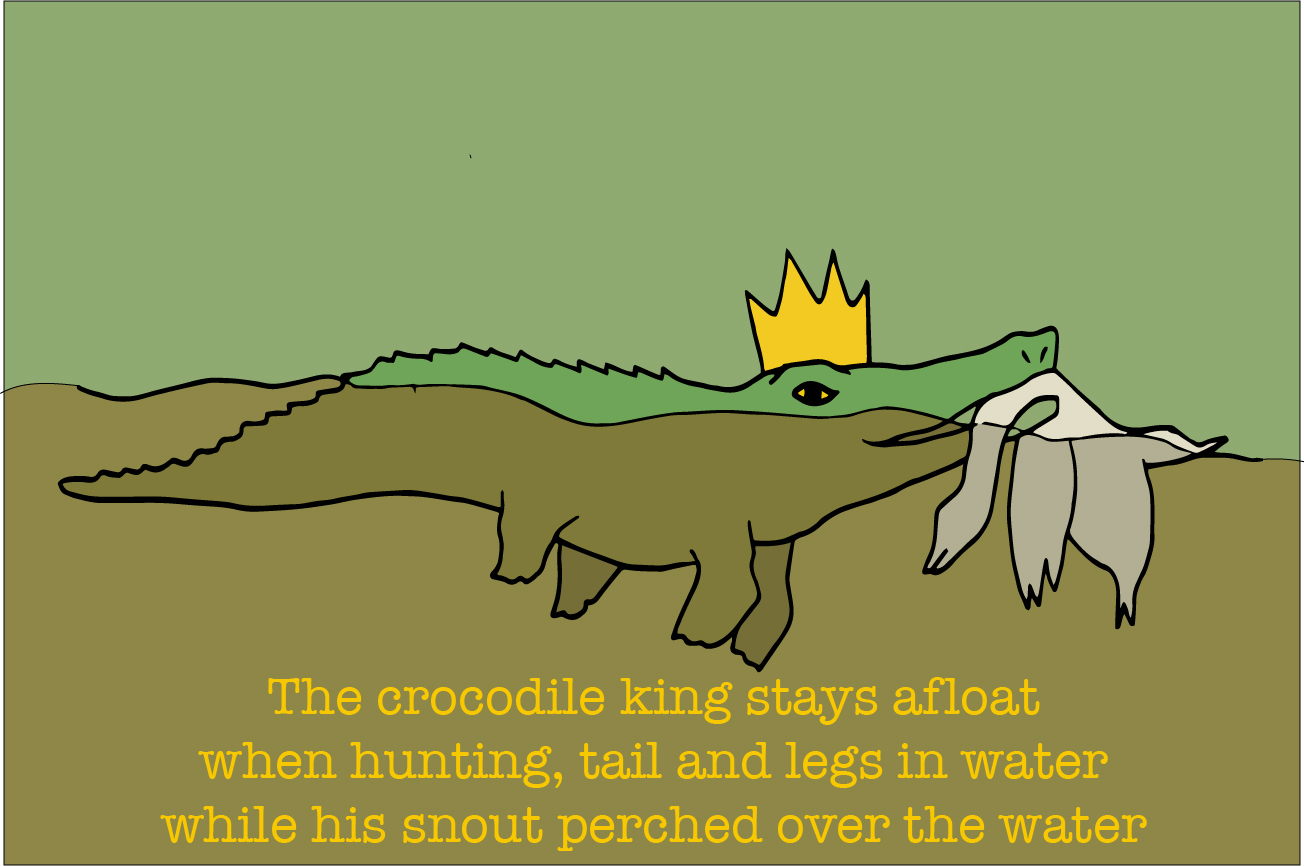After a tedious process of taming the beasts, we finally understood how our designated animals interact, individually and together. Minjee and I came together with our final project-
The Purifier.
Do check out Minjee’s OSS for part 2 on our explorations, challenges, and future projections. https://oss.adm.ntu.edu.sg/minjee001/croc-plover-behind-the-scenes/
The link redirects to our PDF to summarise the entire project:
https://drive.google.com/file/d/1QFSrEBHJk2F3MRmh2KwJDc0KQH_-S-_C/view?usp=sharing
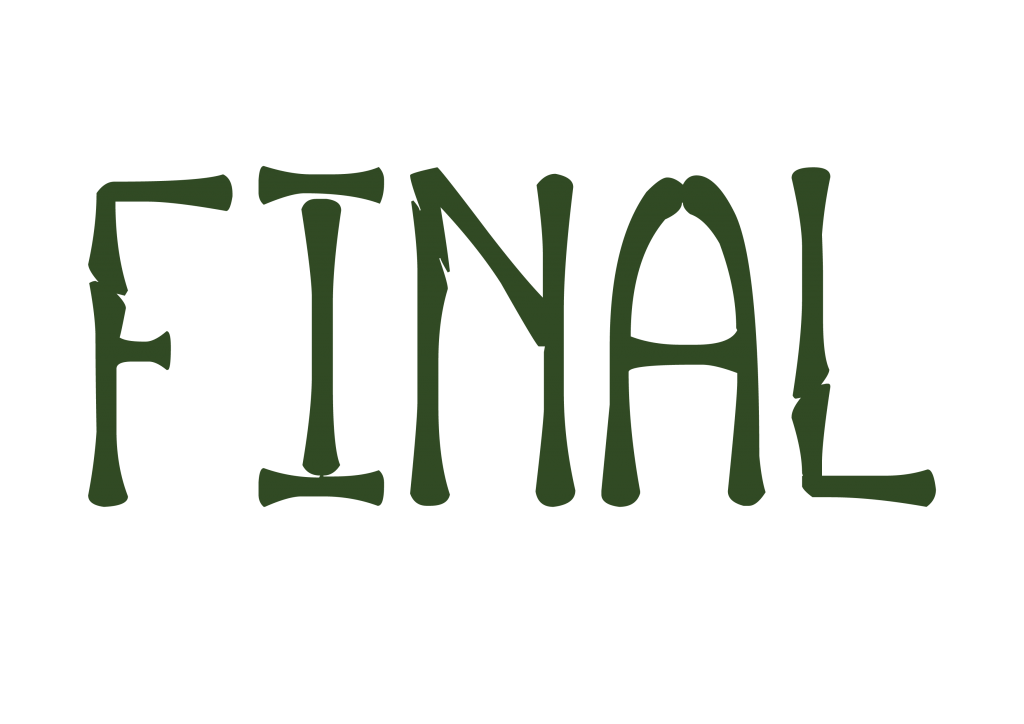
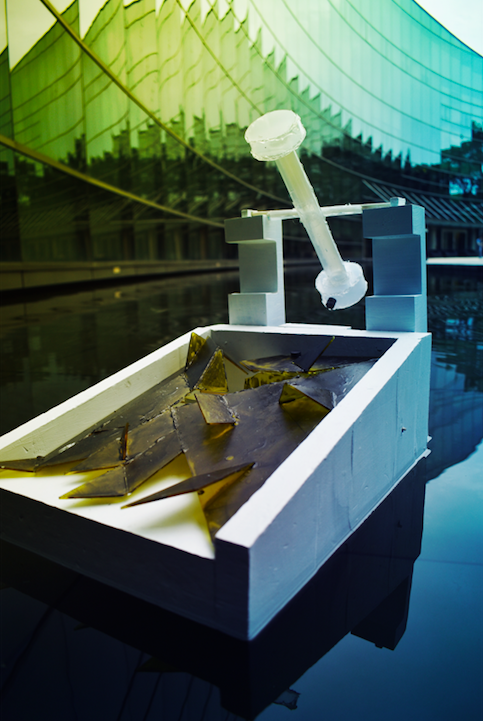
Product Brief: Our kinetic installation named The Purifier, is an amalgam of the quiet aggression of a crocodile and the perky routines of a plover bird.
It is a moving platform constructed with a Japanese “deer fountain” pivot that directs hot water down a scaly acrylic board brushed with thermo-chromatic paint.
The pivot represents the plover bird‘s plucky energy of pecking incessantly at the crocodiles‘ teeth. The slanted scale mimics the body of a crocodile, slowly and gently floating on water while being cleaned up by the plover bird. It hides its sharp teeth within its scale exoskeleton.
Meanwhile, both animals share an affinity with warm temperature, where the plover bird uses the heated water to lay eggs and the crocodile uses its back scales to source out heat. We chose to represent this common trait with colours that changes according to temperature. And hot water is a concept that is physically and aesthetically charged with energy.
The process of starting this installation starts from funnelling hot water down onto the peak of the pivot, which the water accumulates weight against the balance point and eventually pours out. The hot water brings the “plover bird” down to the “crocodile” and trails down the slope. The hot water seeps down the acrylic, turning the acrylic from dark green to yellow as it moves along protruding edges, slithering like a crocodile.
The hot water sliding off the acrylic propels the installation away.
添 水
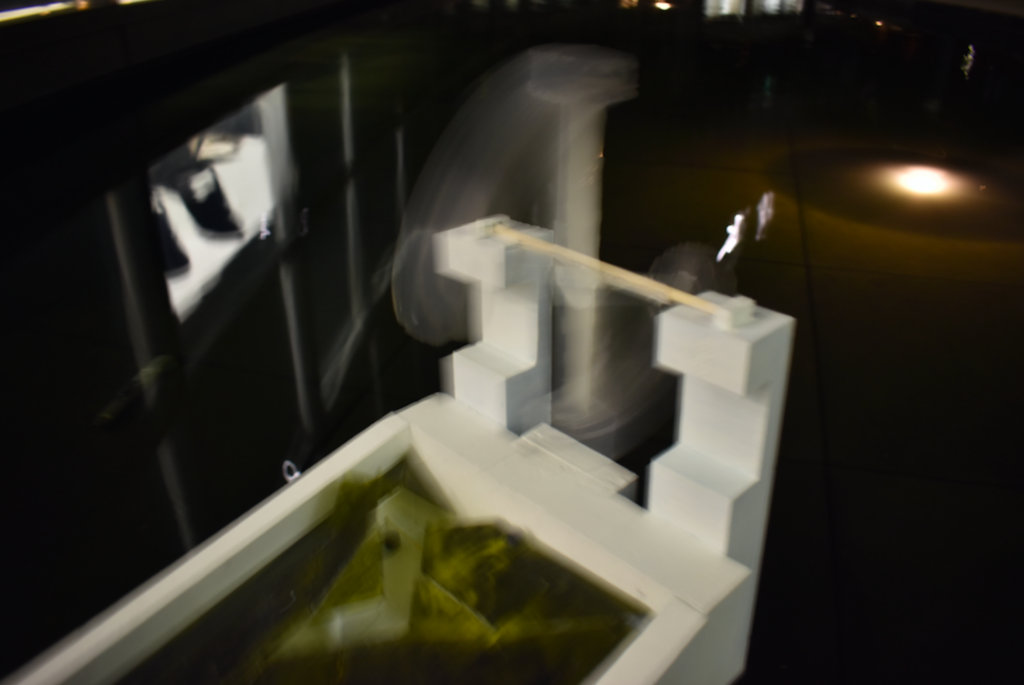
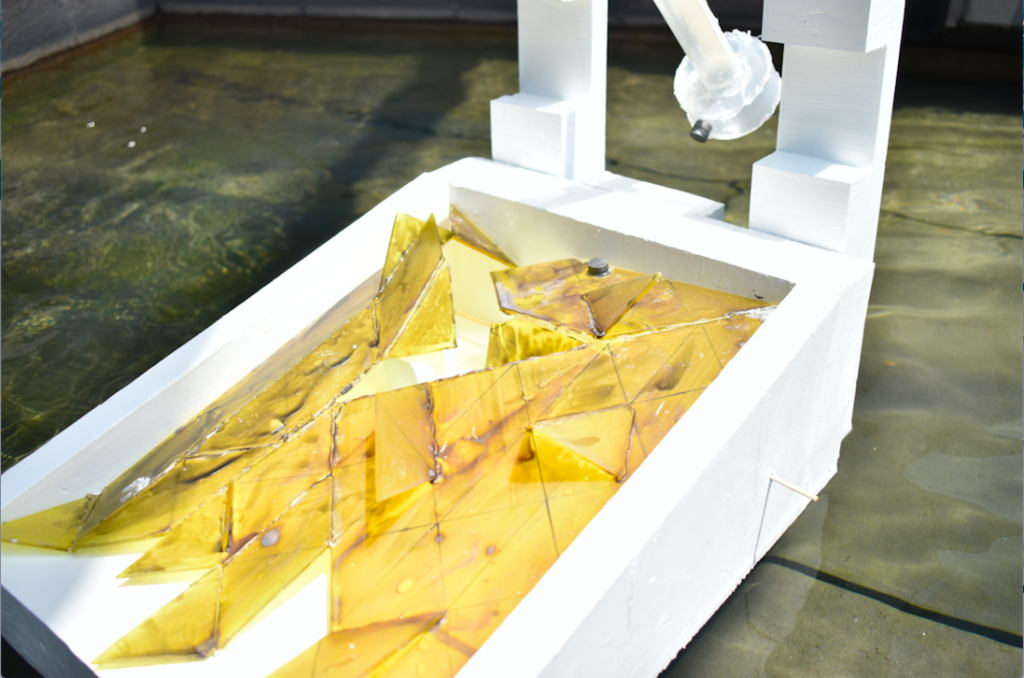
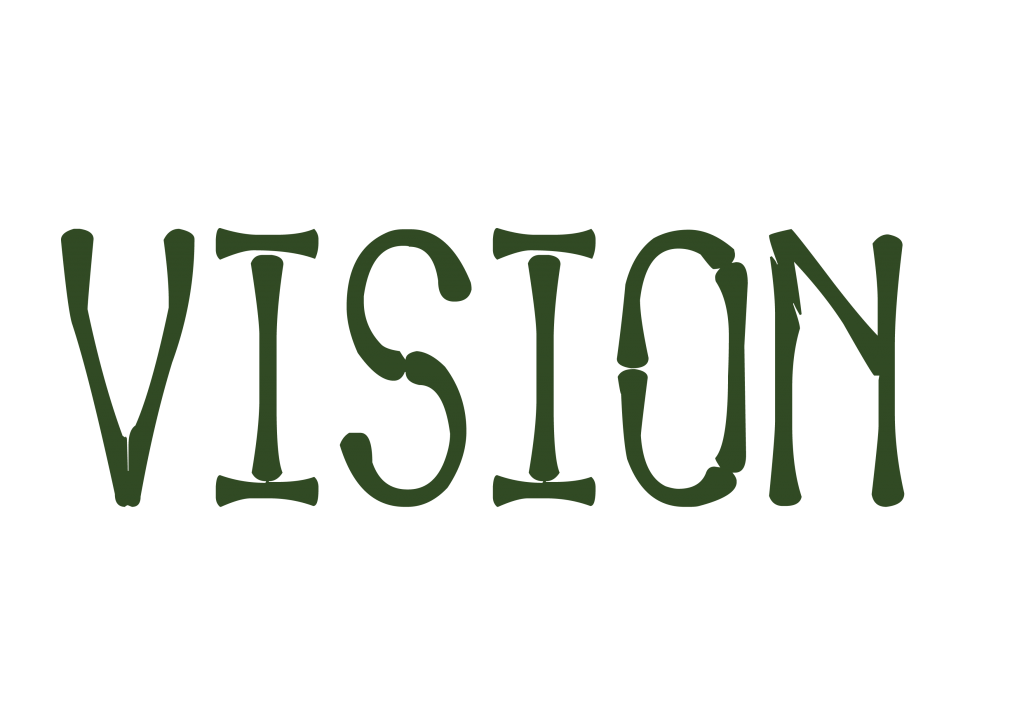
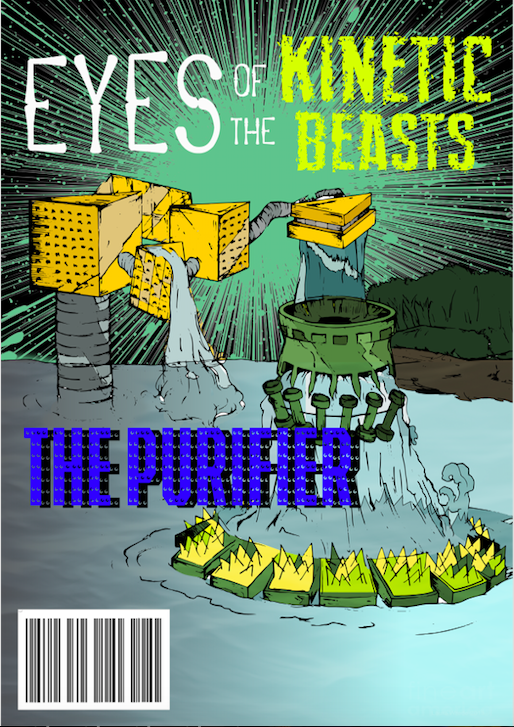
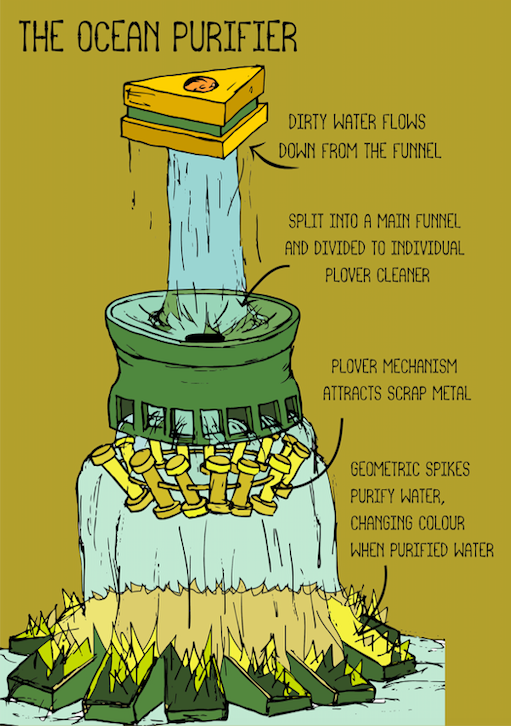
After much consideration, we realised that there was one obvious function that this installation could be broken down into- Cleaning.
The very fundamental relationship between the crocodile and the plover bird stems from the plover bird eating flesh off the crocodile who just lies in the water stale and awaiting for a chance to pound. This could not point further than an ocean purifier.
The Ocean Purifier is a futuristic device that is self functioning, afloat the ocean.It moves around the ocean without manual control, filtering the ocean clean of pollution. Dirtied water spirals down the polygonal funnel, splitting into the magnetic pivot filters, picking up metal scraps. The water then moves down into the jagged base, where bigger chunks of junk are retained. Technology is advanced and the jagged base releases a non-toxic chemical that purifies the water. It changes colour the moment water touches it, becoming visually stunning whilst in a concept that is often seen “dirty”
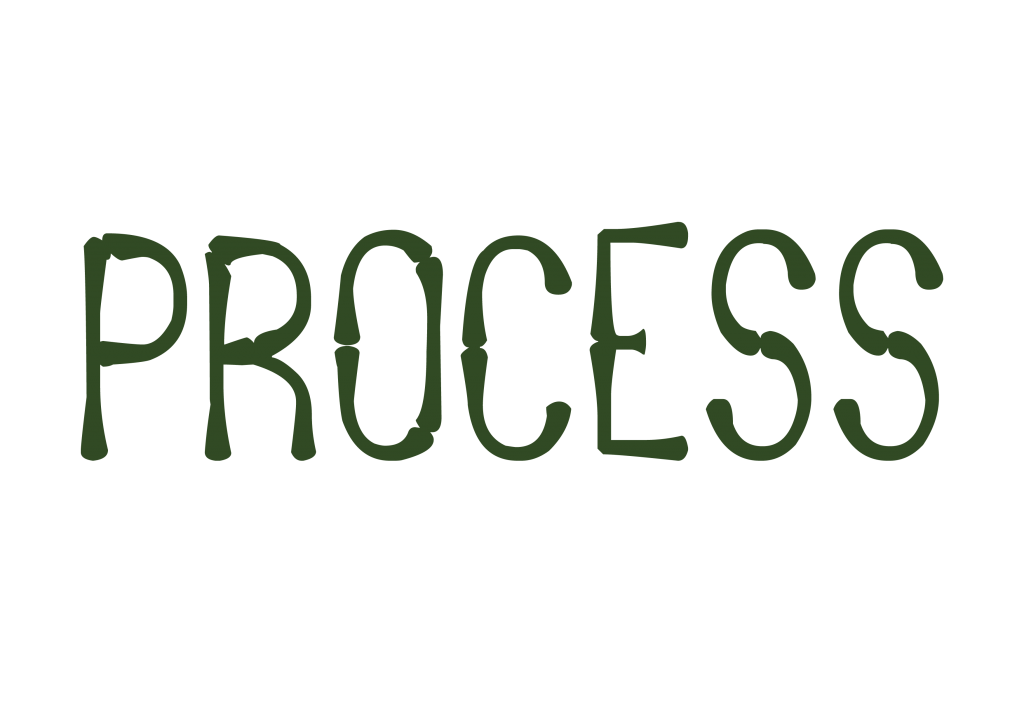
To accentuate this idea and installation, many explorations were done and those can be found on Minjee’s OSS. The process of making this installation functional was tedious and that will be explained below.
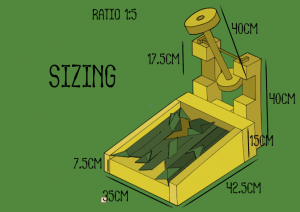
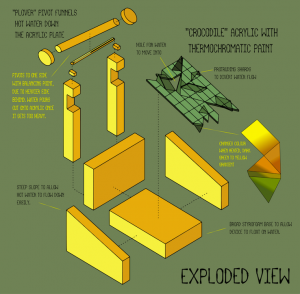
Plover’s Pivot
Minjee started out with a great abstract representation of the plover bird that funnels water as it moves along a pivot, much like a water wheel. We later found out that this was a concept commonly known as a “deer fountain” or sōzu which is commonly used to frighten crop pests away. We took a while to understand and harness the concept of balance, our attempts are shown below.



We realised that this entire structure is based on balance and weight. The pivot is a beam lined with an off-centred balance thats heavier behind. This creates a default position of perking upwards like a bird shown in the sozu shown below. The water’s weight when accumulating on the beam pushes it downwards and releases the water. We realised the reason why our model did not work efficiently was because it lacked space below the beam. This meant that the beam lacked space for the pivot to rotate down and move up, losing ability to gain momentum. We picked up on it and adjusted the model’s height accordingly.
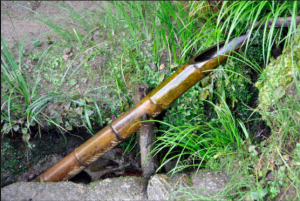
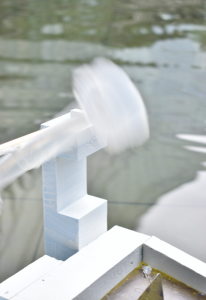
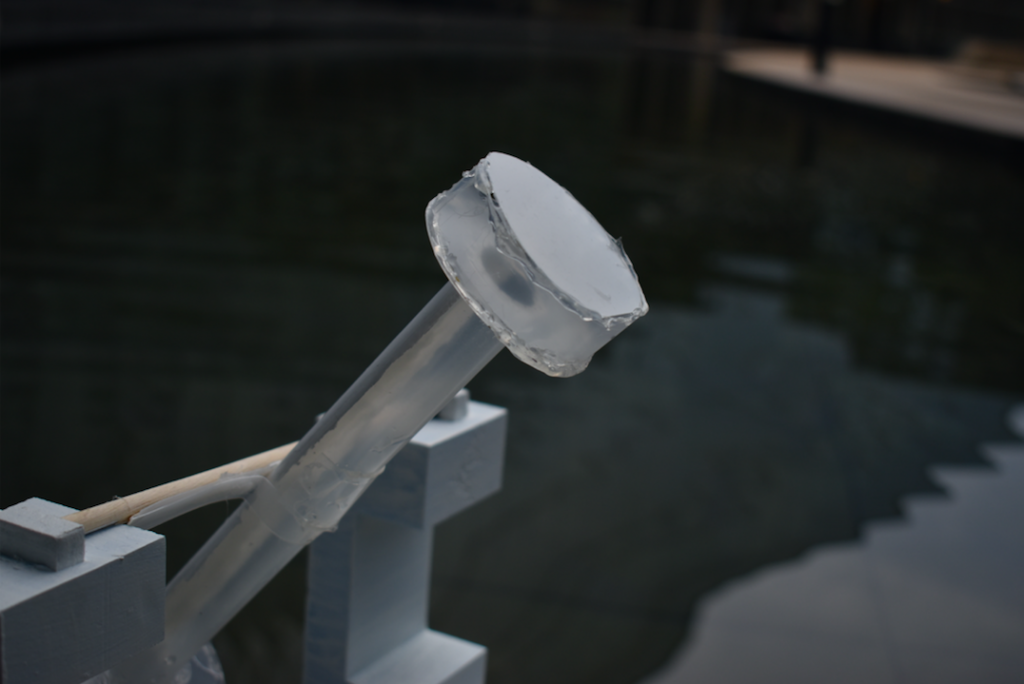
Crocodiles Scales
The crocodiles’ scales were less restrained with technicality, since it is just mainly acrylic shards with thermo chromatic paint. The crocodiles’ scales thus changes colour according to the heat. Our initial model was abstracted scales that rises with water, which we eventually turned into a flat plane where water floated on, which is further abstracted into protruding spikes. The spikes allow the water to flow around in a slithering pattern, instead of one smooth flow.
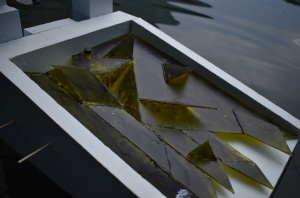
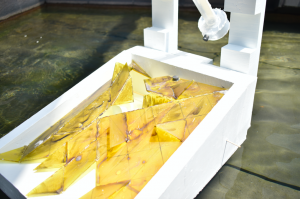
On the day of presentation, the scales turned yellow 1 minute into standing outside. This immediacy and adjustment to heat is representative of this dynamic ability of the crocodile.
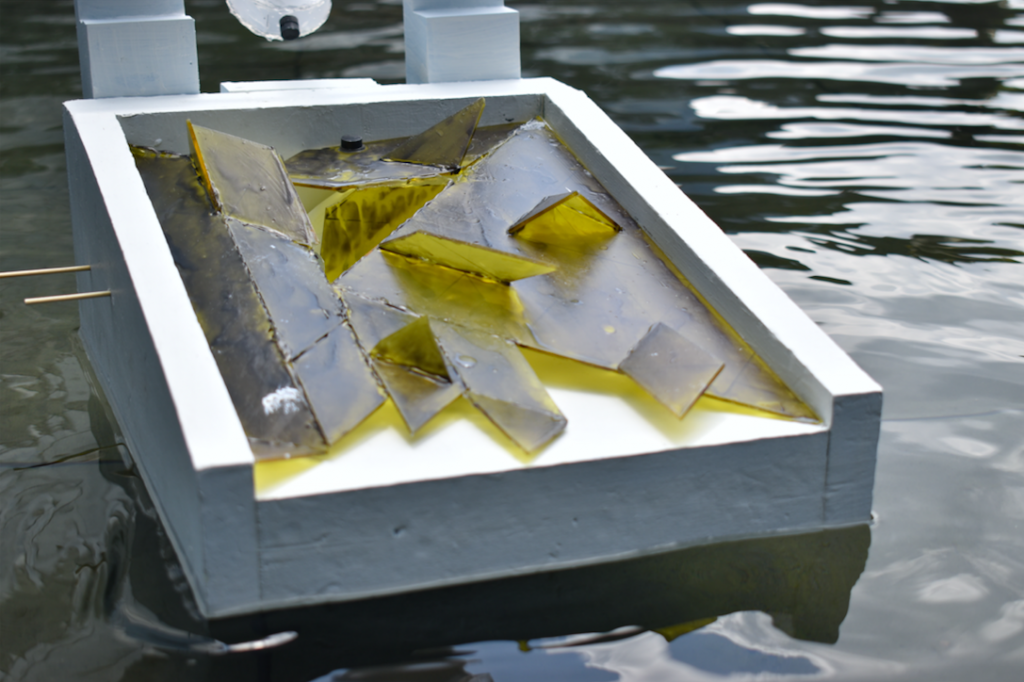
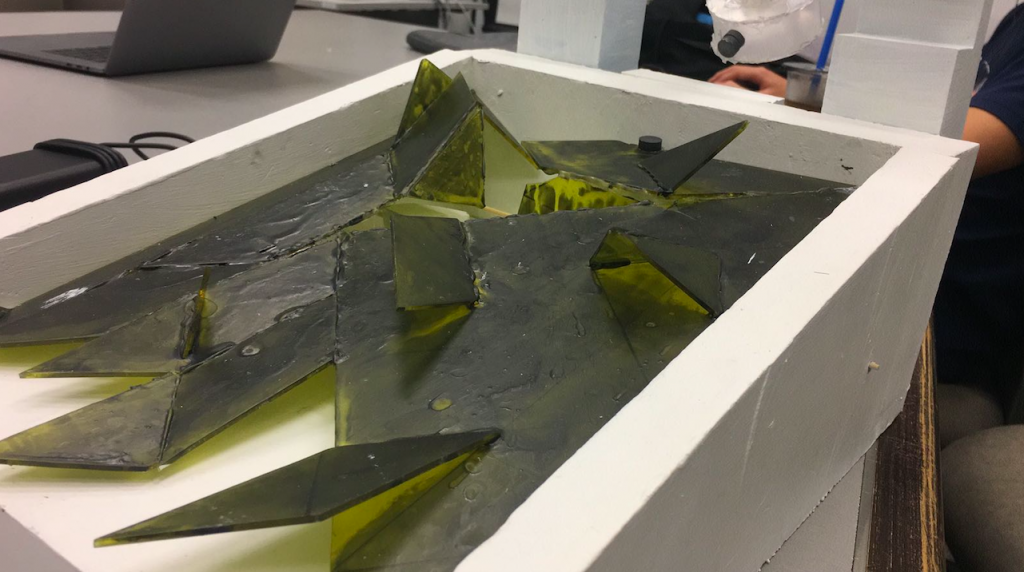
The shards are placed at an angle that allows the water to flow in a slithering position. They are also placed at an angle such that the water can flow over.
Initially the thermo-chromatic paint was lined over the plover bird instead of the crocodile. It was meant to have the bird change colour when the hot water funnels down. Instead, we decided that the water flowing over the crocodile’s back would be more visually engaging.
We realised that the thermo-chromatic paint (which is actually heat-sensitive nail polish) turns transparent when heated. We had an issue earlier on as we realised that the black paint turns white, which is coincidentally the colour of the plover bird model.

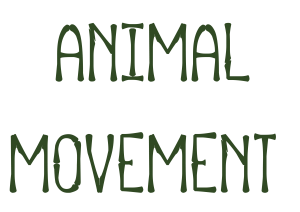
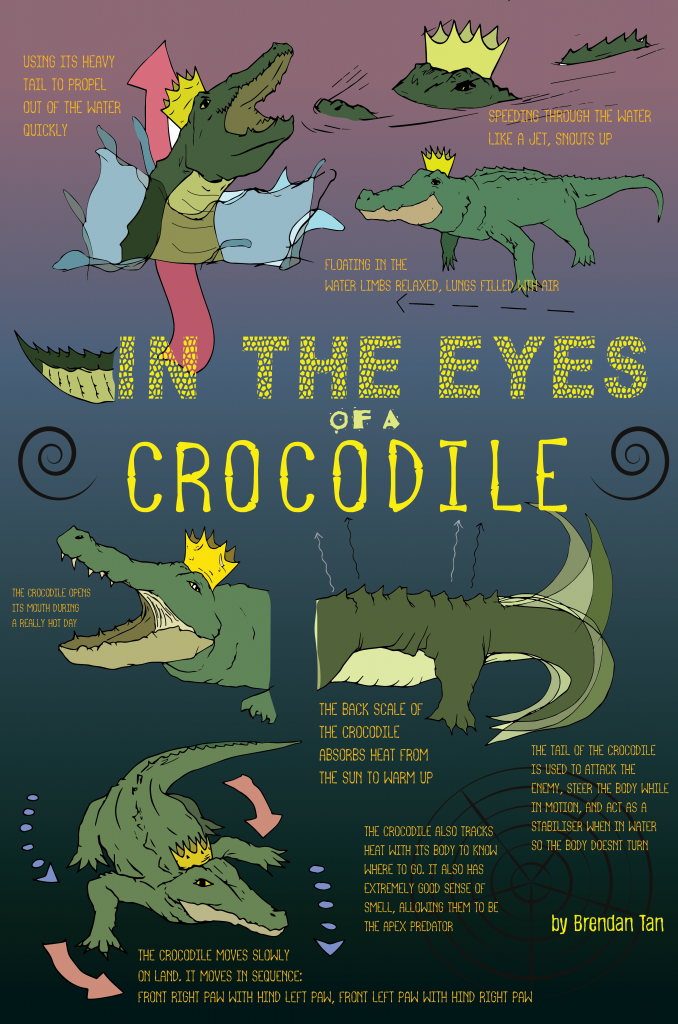
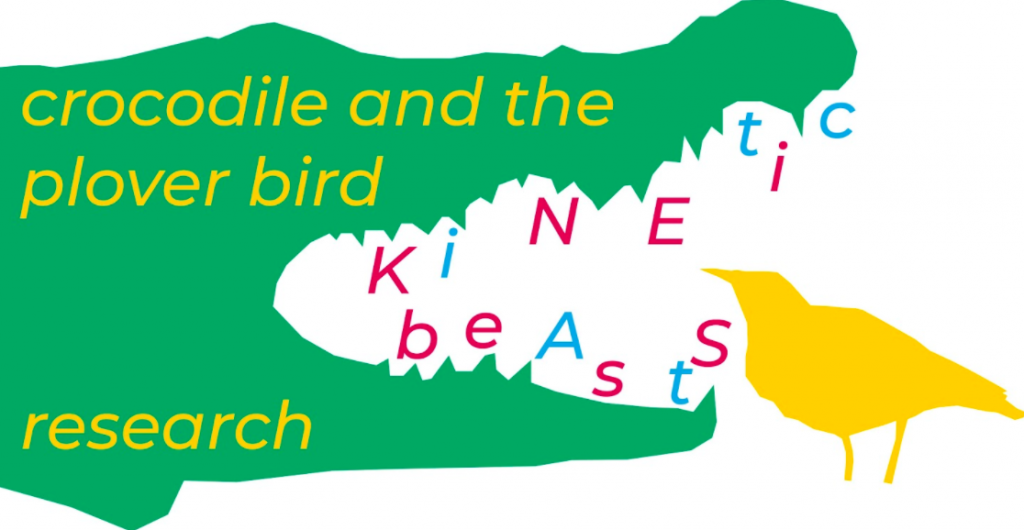
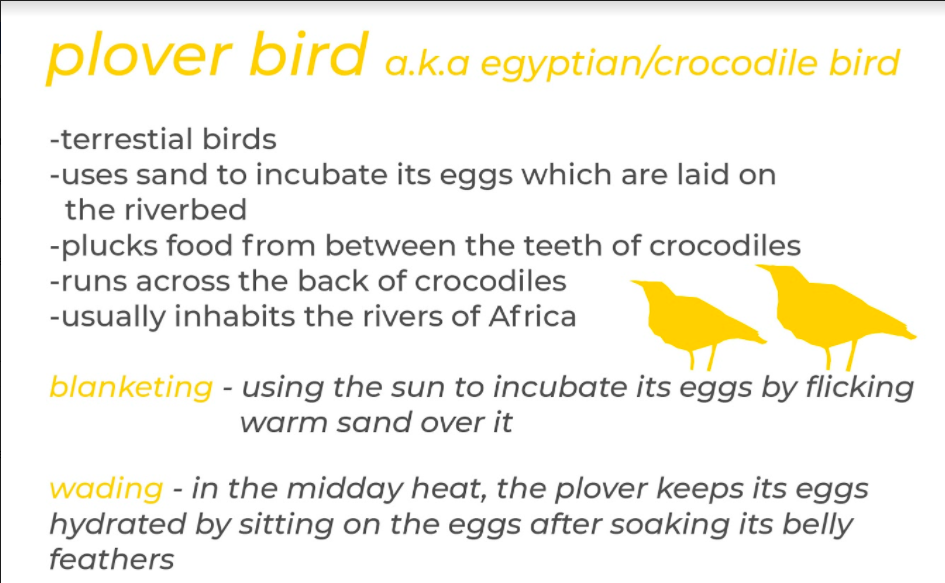
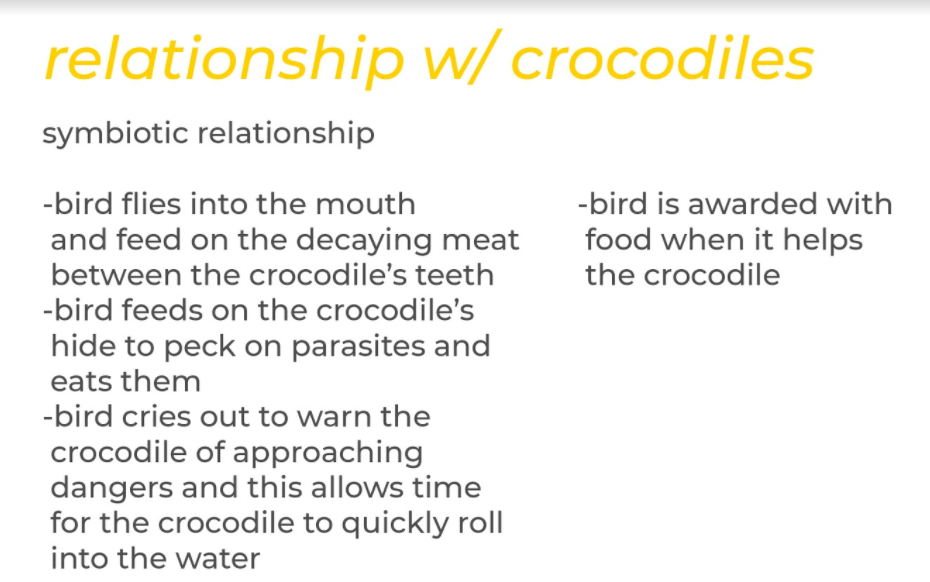
To further elaborate on the movement of the animals within this installation:
The crocodiles’ movement is represented as the slithering motions of the trailing water hot water, leaving a line of yellow amongst the dark green acrylic. It is also represented in the floating motion of how a crocodile hunts, snout above the water. More subtly is the representation of having teeth underneath the acrylic board, which will be discussed further in part 2.
The plover bird’s movement is the pecking action of picking out meat from the crocodiles teeth, just a routine action of falling up and down.
